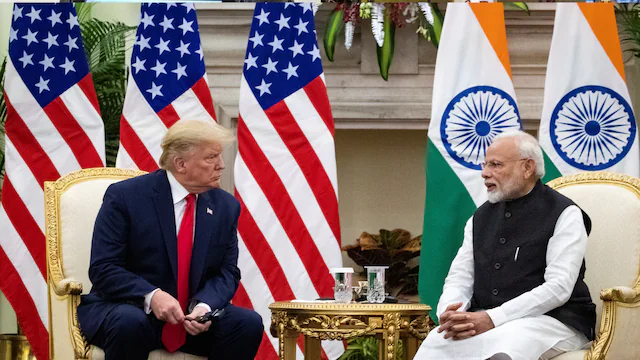Introduction:
As the United States prepares for the 2024 presidential election, speculation is mounting over the global implications of a potential second term for former President Donald Trump. For India, which developed a strategic rapport with Trump during his first tenure, a “Trump 2.0” presidency could bring both renewed opportunities and critical challenges across diplomatic, economic, and security dimensions.
Body:
During his first term (2017–2021), Donald Trump fostered a visible and personal connection with Indian Prime Minister Narendra Modi, culminating in high-profile events like the “Howdy Modi” rally in Houston and the “Namaste Trump” event in Ahmedabad. The symbolic warmth between the two leaders reflected a broader strategic alignment, especially in the context of shared concerns over China, regional security, and global trade imbalances.
Under Trump’s America First doctrine, the U.S. pushed for reciprocal trade terms, which led to tensions over tariffs on Indian exports and the revocation of India’s Generalized System of Preferences (GSP) status in 2019. While bilateral trade reached record highs, the approach emphasized transactional diplomacy, which forced India to become more self-reliant while seeking diversified partnerships globally.
In the Indo-Pacific region, Trump significantly strengthened the Quadrilateral Security Dialogue (Quad), aligning with India, Japan, and Australia to counterbalance China’s growing assertiveness. A second Trump term could likely reinvigorate the Quad with greater emphasis on defense cooperation, technology sharing, and maritime security — a direction New Delhi supports to ensure a free and open Indo-Pacific.
However, concerns remain over Trump’s isolationist tendencies, especially his skepticism toward multilateral institutions. A U.S. retreat from global leadership could complicate India’s interests in forums like the World Trade Organization (WTO) and United Nations, where it seeks greater influence. Moreover, Trump’s unpredictable stance on immigration may impact the Indian diaspora and H-1B visa holders, a critical issue for India’s IT industry and skilled professionals.
On the economic front, Trump 2.0 may push for stricter digital trade rules, which could affect India’s burgeoning tech sector. However, the push for decoupling from China may benefit Indian manufacturing and pharmaceuticals as American companies seek alternative supply chains.
Energy cooperation is another area of mutual interest. During his previous term, Trump expanded U.S.-India energy trade, particularly in LNG and crude oil. A return to office could revive this bilateral energy partnership, aligning with India’s growing energy needs and diversification strategy.
Conclusion:
A second Donald Trump presidency would likely maintain India as a key strategic partner, particularly in areas of defense, trade realignment, and counter-China policy. However, it may also introduce new uncertainties around immigration, multilateral engagement, and economic negotiations. As India balances its domestic priorities with evolving global dynamics, it must prepare for a pragmatic, interest-driven partnership in a potential Trump 2.0 era.



